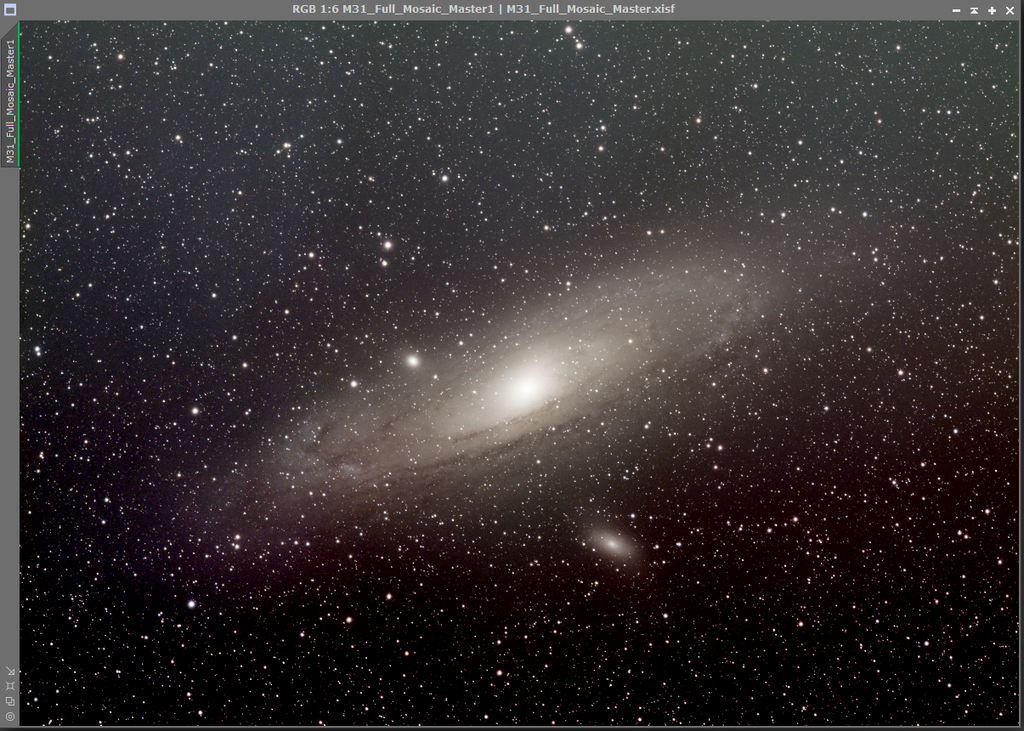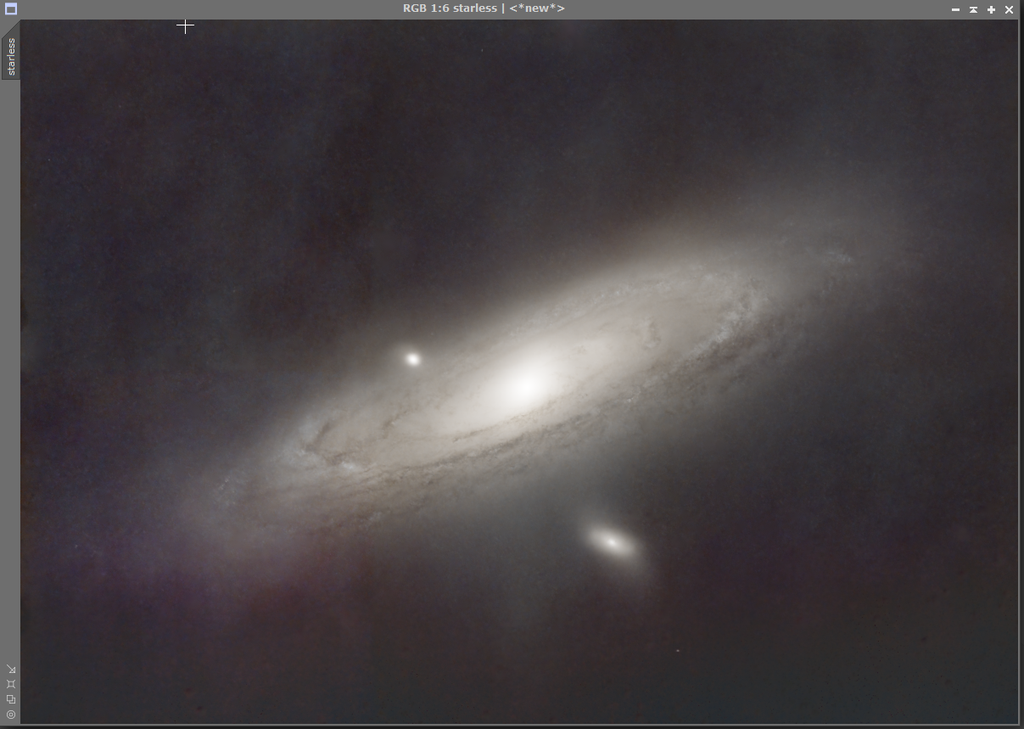Given that you've had 38 hours split on six panels that would give about 6 hours + in total integration, unless you meant that each panel has 38 hours into it, so it's a bit on the short end for my taste. But to start off I would give this a read:
https://chaoticnebula.com/pixinsight-mosaic-workflow/I'm not sure how it holds up in terms of processes/scripts available today as it's been a while since I've read it. Still, it does go through a lot of the basics and should be quite helpful. The first thing I'd do is drop GraXpert, if you depend on some sort of automated process I would rather suggest SetiAstro and the AutomaticDBE script. GraXpert does not treat the data very kindly and I would only use it in extreme cases. Second, don't do NoiseXterminator on your linear image. This is actually advise from the creator himself. If you still insist on it you should be sure to set the detail slider to zero. I would still wait until you've stretched it either way. DBE and some crop needs to be done in the mosaic phase but after you could try something like this; BXT Correct Only > SPCC (you need to calibrate your colors) > BXT deconvolution > SXT (StarXterminator) with large overlap.
Then you can process your stars and galaxy from there with whatever stretching method you prefer. I mostly prefer masks and HT transformation, GHS is a valid option too. After stretching you can start applying some noise reduction, or you could leave it till the very end of the process before re-screening the stars back into the image.
EDIT: Is the sub-frames properly calibrated? The image seems to have dust spots present above the galaxy to the left.




